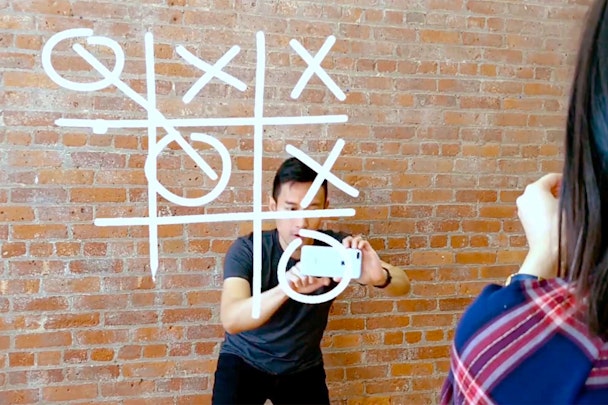As augmented reality becomes shareable reality, creatives will have more freedom than ever
Everything is better when you experience it together – whether it’s eating, watching a live gig, a World Cup match or playing your favourite video game. Now providers of emerging technologies that started life as single user experiences are finding ways to create even more ways of enjoying social and shared experiences.

This is happening now within the augmented reality space. AR has really started to have a resurgence over the past 18 months due to the availability of markerless AR tools (which have no need for a physical image to trigger an augmented experience) from the likes of Facebook, Snapchat, Apple and Google.
In an interview with the Independent, Adobe chief product officer, Scott Belsky, stated: “…we believe that augmented reality is one of the new mediums that could be as big, if not bigger than the web.”
Even in the past few weeks we've seen what could be considered the turning point for this exciting technology. At both their respective annual developer conferences, Google and Apple announced updated tools enabling multi-user AR experiences – multiple devices seeing the same digital content in the same physical space at the same time rather than the very insular and limited experience of being a solo user.
At Google’s I/O conference in May it added ‘Cloud Anchors’ to its existing developer tools – ARcore – released a year prior. In its simplest form it allows interaction of common digital content between multiple devices over the cloud.
Google created ‘Just a Line’ which shows off this potential as the first cross-platform shared AR experience.
In June, Apple announced a huge update to its very own platform – ARKit 2 – by adding shared experiences at the WWDC (World Wide Developers Conference). In addition, it added persistent AR experiences (that can be tied to a specific location) as well as object detection and image tracking to make AR apps even more dynamic as they lead the largest AR platform in the market right now.
Apple showcased live on stage what this enables through a partnership with Lego, allowing multiple iOS devices to see the same digital Lego scene on the table, interact and affect what the other user was seeing on their device. For example if a fire broke out in the little Lego AR building, one user would be able to drop in a fire engine and another would be able pick up one of the firemen in the truck and place them on the correct floor of the building to combat the fire.
This opens up the possibility for true multiplayer interactions. Up to 20 devices will be able to have the same digital experience simultaneously and be immersed in content like never before. In turn, this will naturally lend itself to the next generation of AR gaming to follow the wild success of Pokémon GO two years ago.
Niantic, the studio behind Pokémon Go, surprised many by pulling back the curtain on a number of AR prototype technologies that have the multiplayer AR at the core and its potential creative applications. This includes Project Neon – a real-time cross-platform multiplayer that allows you to move around in the physical space and shoot digital beams at your friends (like Lazer Quest with your phone) and ToneHenge – shared environment puzzle games that you solve with your friends in a physical-digital crossover.
What I’m most excited to see are the collaborative developments in the work environment and between teams. Shared physical and digital workplaces will allow almost unprecedented creative freedom, opening up collaborative environments to create, develop and constantly redefine what’s possible together.
With this rise of shared persistent AR experiences there will be a number of questions and challenges that need to be addressed. For example, who will need to legislate and govern what could happen if people take advantage of this space? No doubt this will lead to an influx of digital vandalism or brand trolling. If it can’t be seen by the human eye but by the lens of my smartphone, who is responsible and how can I protect myself?
The development of these tools is making AR and its possible future applications increasingly accessible regardless of skillset and development knowledge.
A larger number of creative minds will have access, and therefore be able to probe and push the tech that traditionally would need a very particular set of skills to prototype over a number of weeks. With this new tech now possible to prototype in just a few days, we will likely see a boom of AR experiences accessible for all, which will help mature the use of the technology as well as driving adoption in the market.
Will Harvey is innovation lead at VCCP
